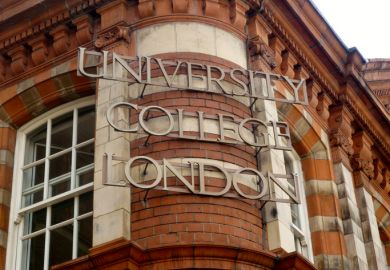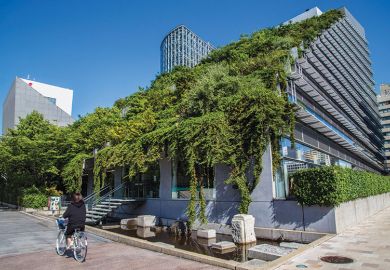In a land where central heating salesmen find slim pickings, and where most building materials grow free of charge in your backyard or your neighbour's, it might seem likely that an optimal, standardised house would emerge over centuries. Far from it. The fascinating diversity of Indonesian vernacular architecture demonstrates how spiritual beliefs -- more than materials or meteorology -- inspire builders on one island to go about their task with a different vision from those on another, perhaps only a day's sail away.
From the rocket-launcher roofs of the Torajans, who believe their ancestors landed in starships from the Pleiades, to the subtle orientation of Balinese pavilions towards the sacred mountain, there are forces at work here that belong more in the realm of anthropology and comparative religion than in architecture in the western sense of the word.
The Traditional Architecture of Indonesia is essentially an ethnographic book rather than a technical work of reference. For the general reader and those new to the territory it provides an eye-opening survey, supported by nearly 200 colour illustrations which are extremely well reproduced. As buildings explain themselves better pictorially than verbally, this lavish use of colour photography in an affordable publication is to be saluted.
Architects, designers and other specialists should be cautioned, though, not to expect too much. Despite the book's compendious title there is only superficial coverage of the "engineering'' aspects of employing tropical timbers, bamboos and thatching. The materials themselves are sufficiently described -- but if you need to know the optimum height of a coconut column or the proper angle for the elephant-grass roof of a bale wantilan, you must search elsewhere.
A few sectional elevations and sketch plans are included. As in the case of the Nias house, the drawings do not follow recognised drafting conventions, nor are any dimensions shown. Arguably any work dealing with architecture is incomplete if the question of scale is sidestepped.
The authors' choice of emphasis on the various regions of Indonesia is understandably weighted in favour of the exotic. Sumatra and Sulawesi are generously covered; those regions where modernisation is more manifest, less so. Yet the dismissal of Java in a mere four pages of text, as if traditional architecture in the republic's most populous island were extinct, seems questionable.
Surely the magnificent keraton architecture of the Solo and Jogjakarta palaces deserves at least a passing mention if the backside close-up of a buffalo merits a full colour page. Many of the grand pendopo structures surviving today are 18th century and have earlier origins. Another tradition unique to Java -- ignored in this book and others -- is the pesisir architecture of the coastal communities; a blend of Portuguese, Chinese and Islamic styles dating back to the origins of the spice trade.
The section dealing with Bali is perplexing too. The authors' lament that tourism has smothered this extraordinary island is as inaccurate as it is fashionable. As if to support their assertion some of the structures selected for illustration are wretched representatives: a dwarfish kulkul tower hemmed in by motor bikes, a dilapidated shanty of no observable interest in the village of Ubud. Finer examples may easily be found in almost any Balinese community -- yes even today.
The text on Bali and many of the line drawings derive from Miguel Covarrubias's seminal Island of Bali, published in 1937, not 1987 as stated in the bibliography. Surprisingly, Balinese Architecture: Towards an Encyclopaedia (1984) is absent from the bibliography. Architect Made Wijaya's book graphically dispels the notion that the sophistication of the Bali tradition is at an end. As in many Asian societies, the Balinese have no particular reverence for antiquity -- except in the case of holy objects. They cheerfully replace temples and public buildings ravaged by the climate or by earthquakes, often adopting stylistic quirks that happen to be in fashion, but still obeying the fundamentals of a strictly ordered tradition. Conservationists may find this a little casual and of course, to add to the confusion, often these days it is the revenues from tourism that pay for the renewal process.
During their colonial custody of the East Indies the Dutch were diligent recorders of ethnography. A growing contemporary interest in the cultural abundance of what is now called Indonesia has encouraged recent publication of English language books on various aspects, updating sources hitherto available only in Dutch. Yet the documentation on traditional architecture remains lamentably sparse. While we await a definitive work on the subject this book serves as a readable and illustrative introductory guide which is most welcome.
Christopher Carlisle is an independent architectural consultant working in Bali.
The Traditional Architecture of Indonesia
Author - Barry Dawson and John Gillow
ISBN - 0 500 34132X
Publisher - Thames and Hudson
Price - £24.95
Pages - 192pp
Register to continue
Why register?
- Registration is free and only takes a moment
- Once registered, you can read 3 articles a month
- Sign up for our newsletter
Subscribe
Or subscribe for unlimited access to:
- Unlimited access to news, views, insights & reviews
- Digital editions
- Digital access to THE’s university and college rankings analysis
Already registered or a current subscriber? Login



